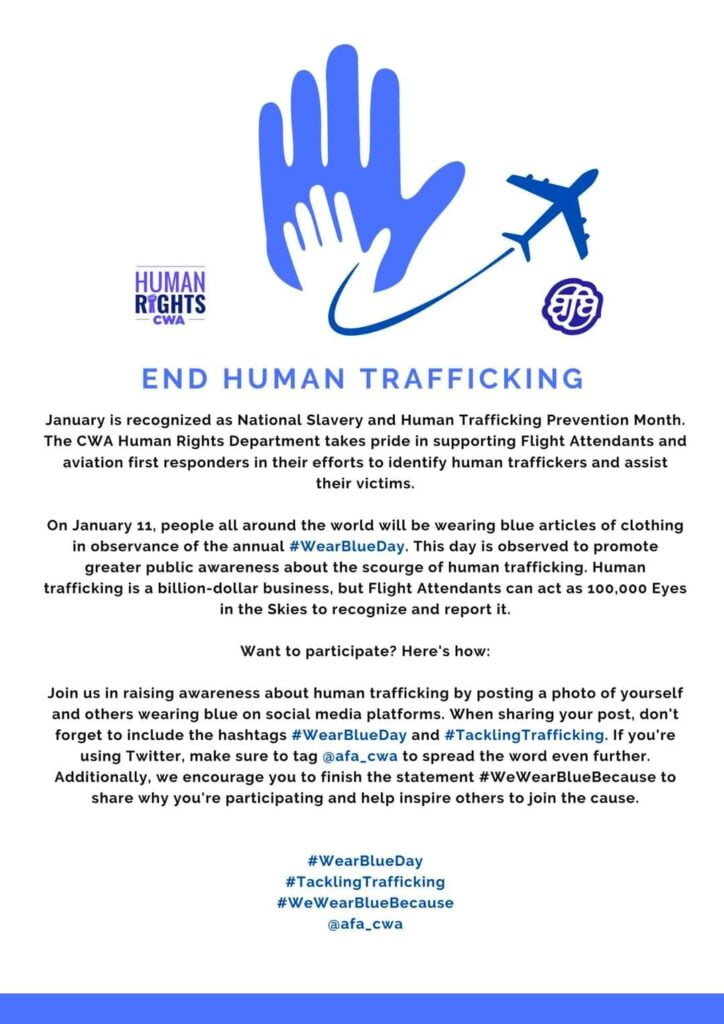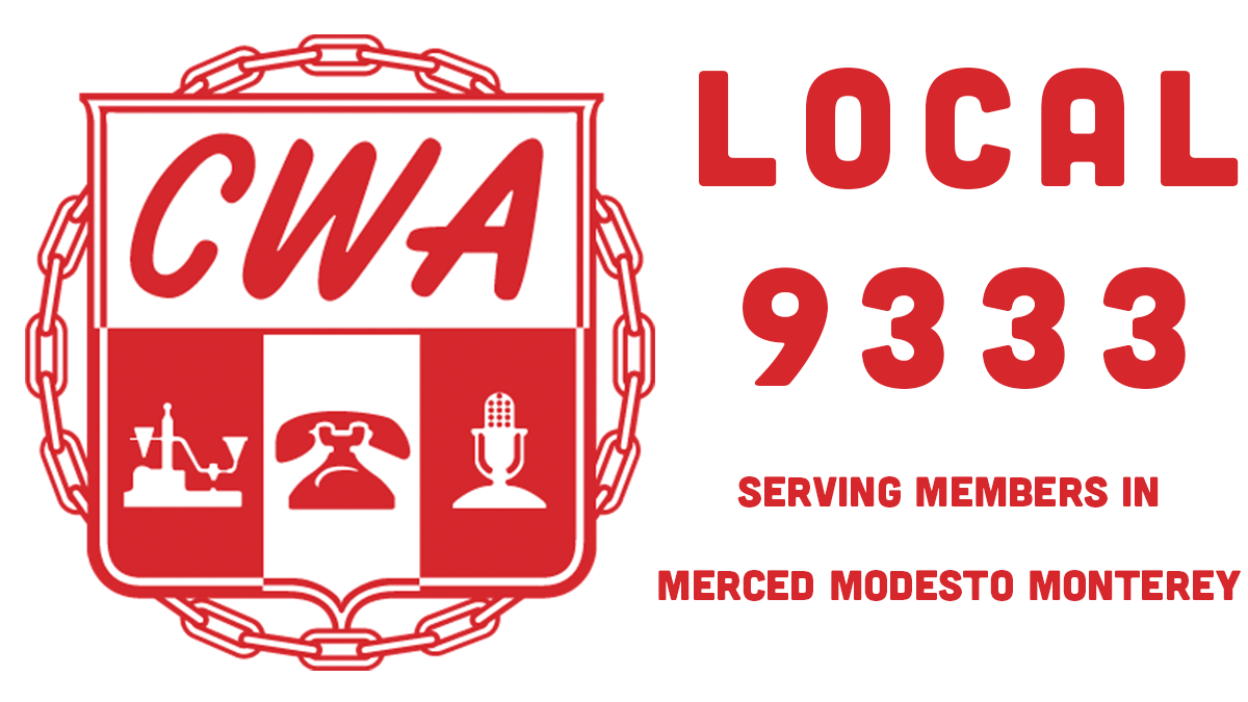January 8, 2022 – January is National Slavery and Human Trafficking Prevention Month. We can take a stand against human trafficking by recommitting ourselves to end it on our planes.
All over the world people will be wearing blue articles of clothing, January 11, in observance of the fourth annual #WearBlueDay to encourage greater public awareness about the scourge of human trafficking.
Human trafficking is a billion dollar business, but Flight Attendants can be 100,000 Eyes in the Skies to recognize and report it. We can be the ones to make the difference.
Want to participate? Here’s how:
On Twitter, post a photo of yourself and others on social media wearing blue with hashtags #WearBlueDay.
Finish the statement #WeWearBlueBecause to share why you are participating.

What Is Human Trafficking?
(article from The Department of Homeland Security)
Human trafficking involves the use of force, fraud, or coercion to obtain some type of labor or commercial sex act. Every year, millions of men, women, and children are trafficked worldwide – including right here in the United States. It can happen in any community and victims can be any age, race, gender, or nationality. Traffickers might use the following methods to lure victims into trafficking situations:
- Violence
- Manipulation
- False promises of well-paying jobs
- Romantic relationships
Language barriers, fear of their traffickers, and/or fear of law enforcement frequently keep victims from seeking help, making human trafficking a hidden crime.
Traffickers look for people who are easy targets for a variety of reasons, including:
- Psychological or emotional vulnerability
- Economic hardship
- Lack of a social safety net
- Natural disasters
- Political instability
The trauma caused by the traffickers can be so great that many may not identify themselves as victims or ask for help, even in highly public settings.
Many myths and misconceptions exist. Recognizing key indicators of human trafficking is the first step in identifying victims and can help save a life. Not all indicators listed are present in every human trafficking situation, and the presence or absence of any of the indicators is not necessarily proof of human trafficking.
The safety of the public as well as the victim is important. Do not attempt to confront a suspected trafficker directly or alert a victim to any suspicions. It is up to law enforcement to investigate suspected cases of human trafficking.
Visit the links below to learn more about human trafficking and how you can protect yourself and others.



